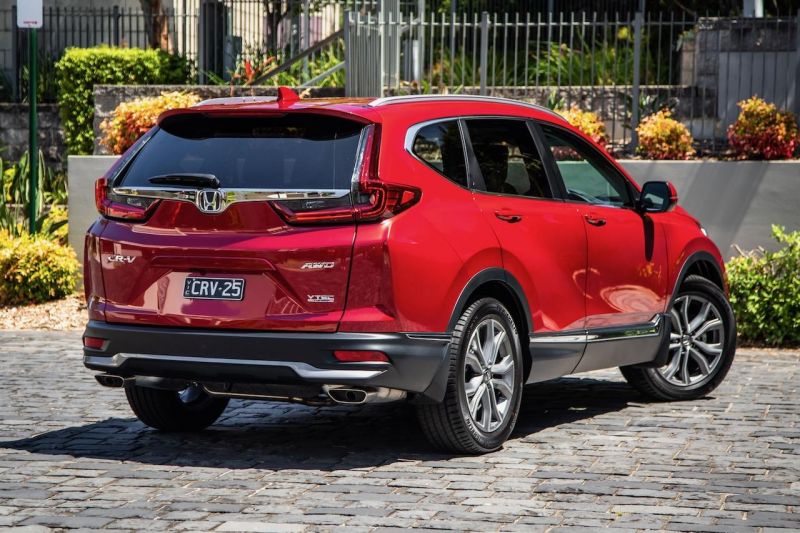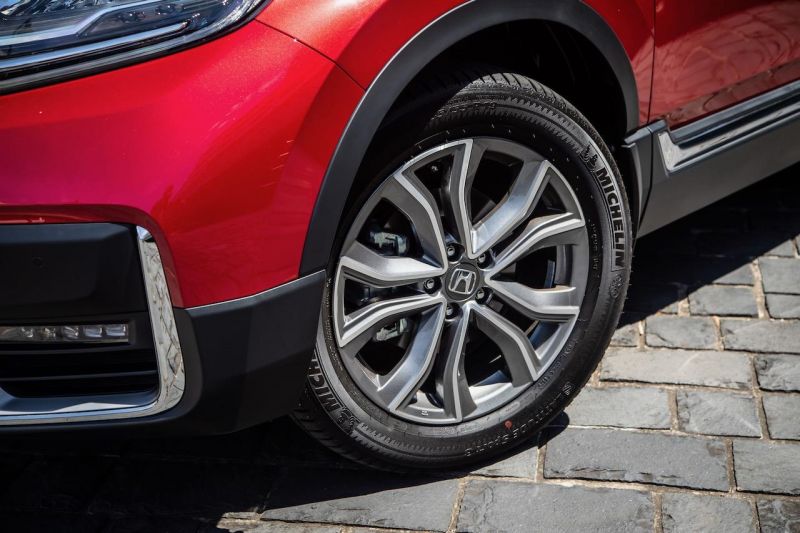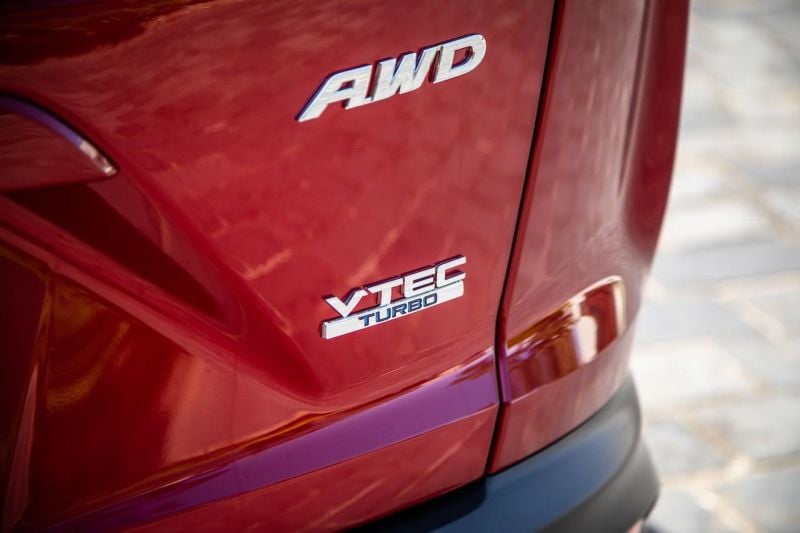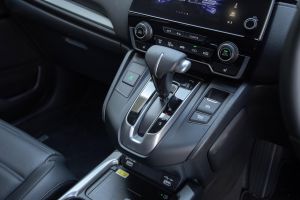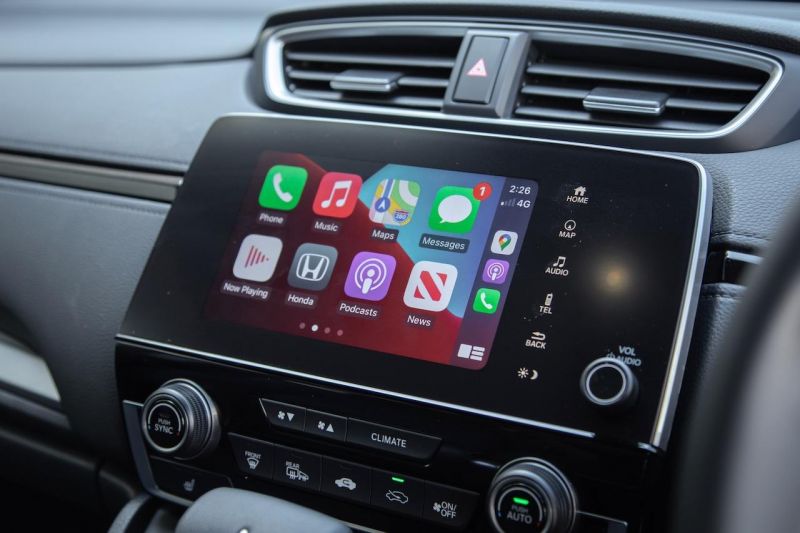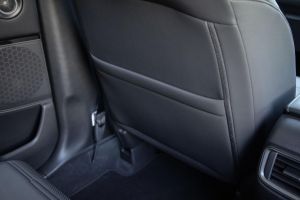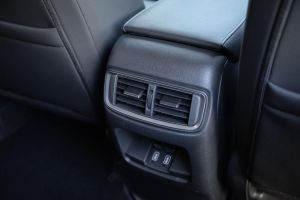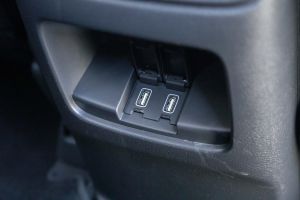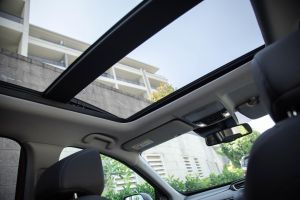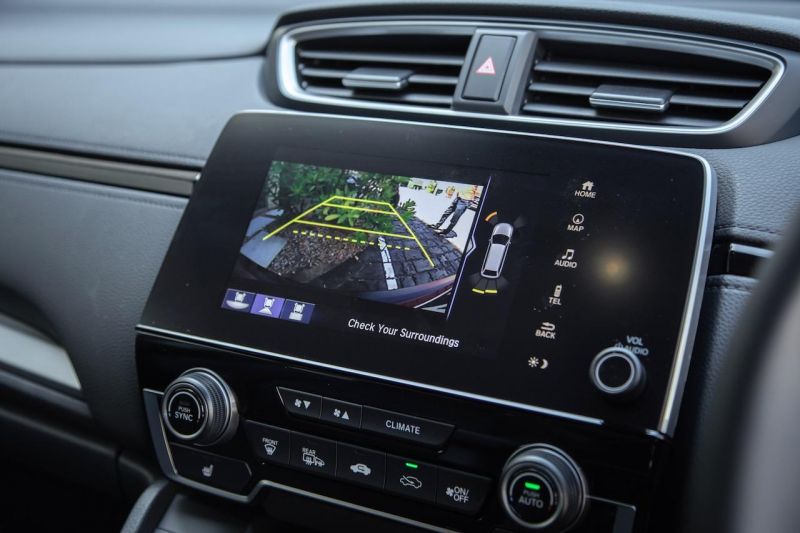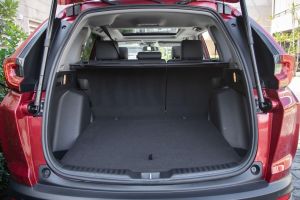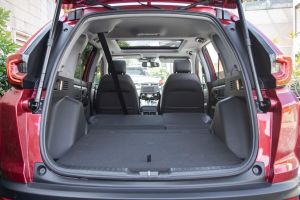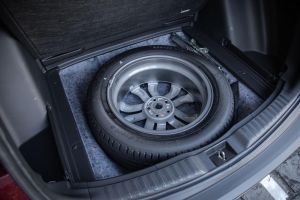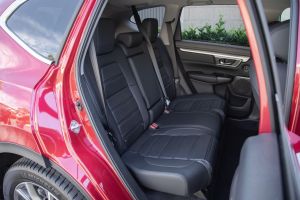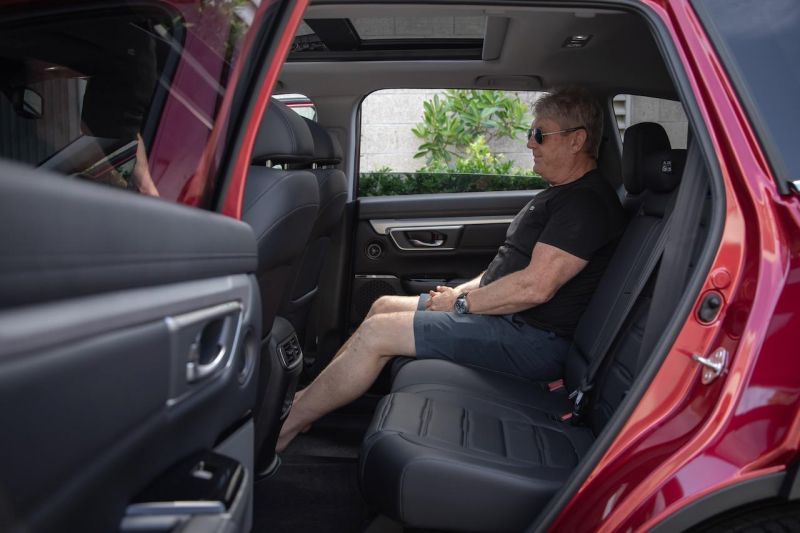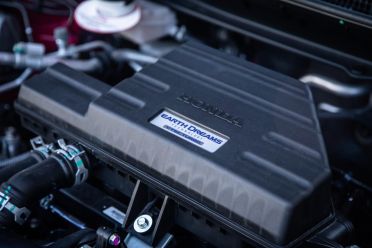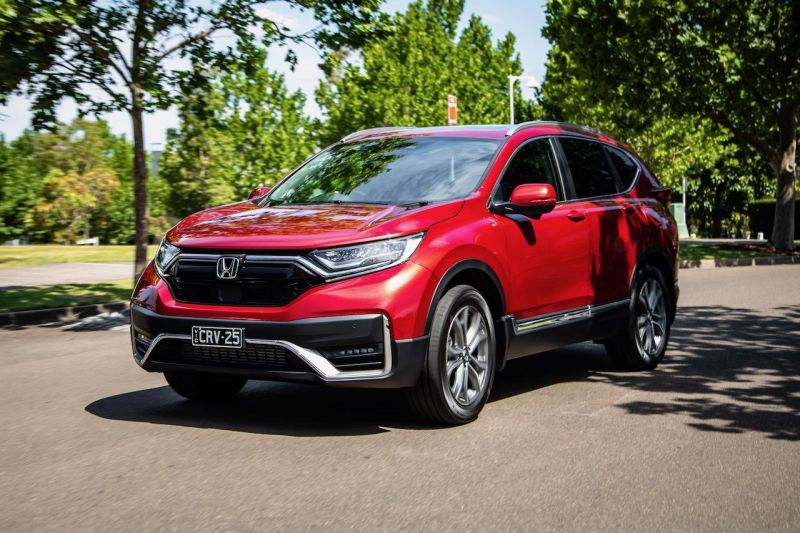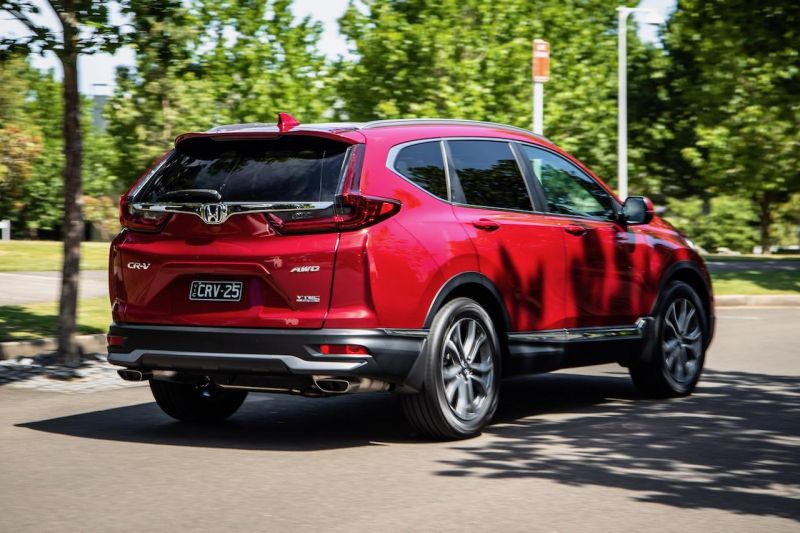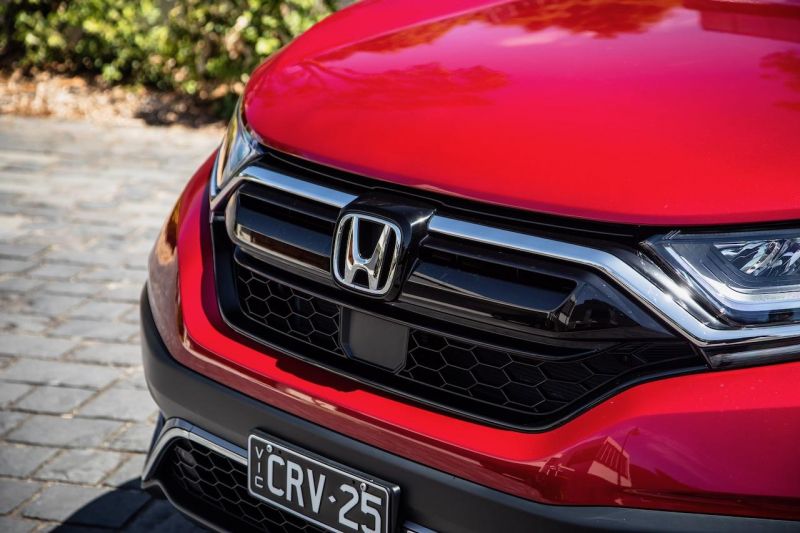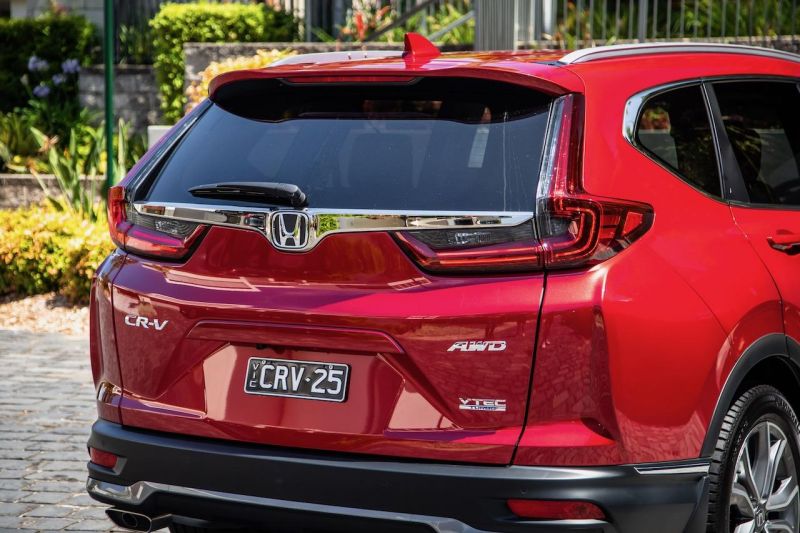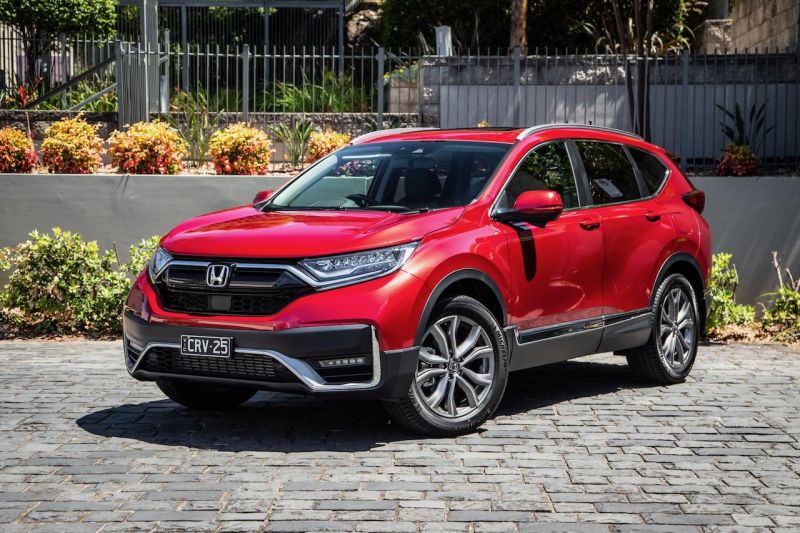Australians have been mad for SUVs for more than a decade, after sedans fell out of favour with both families and outdoorsy types chasing clever space packaging and a commanding view of the road ahead.
Even if you weren’t an early adopter it’s clearly been a case of, ‘if you can’t beat ‘em join ‘em’, given SUVs account for more than 50 per cent of sales. There are no signs of that trend changing – in fact, it’s still on the rise.
Of that bunch, the biggest sellers are medium SUVs. We can’t get enough of them, given this segment alone contributes more than 20 per cent (20.2) of the total mix with several brands vying for a podium position.
The top five in order of sales numbers are the Toyota RAV4, Mazda CX-5, Hyundai Tucson, Nissan X-Trail and Subaru Forester. Chasing them are the Mitsubishi Outlander, Honda CR-V, Kia Sportage, Volkswagen Tiguan and Renault Koleos.
Honda’s CR-V and CR-V Sport used to be the premium play in the affordable SUV space before rival marques like Toyota, Mazda, Hyundai, and Kia started to find more traction with stylish designs and equivalent build quality.
With fresh styling, new technology, and additional safety features packed into what was already one of the most family-friendly bodies in its class, the 2021 Honda CR-V is looking to make a splash among some serious competition.

How much does the Honda CR-V VTi LX cost?
It’s top of the totem pole in the CR-V range and commands a hefty premium for that privilege, with a price tag of $47,490 before on-road costs making it $7000 more than its VTi L AWD five-seat stablemate and $4000 more expensive than the front-wheel drive VTi L7 seven-seat variant.
From a line-up including seven variants, only the entry-level CR-V Vi gets a naturally aspirated 2.0-litre four-cylinder engine, while all other VTi versions are powered by Honda’s more powerful 1.5-litre turbocharged four-pot.
Our CR-V VTi LX faces stiff competition from the top-selling RAV4 Cruiser Hybrid AWD priced from a lower $46,290 plus on-road costs, while the Mazda CX-5 GT 2.5-litre atmo petrol is priced from $46,090 before jumping up to the GT with the 2.5-litre turbocharged engine for $48,590 excluding on-roads.
Hyundai has its range-topping Tucson Highlander AWD 1.6T priced from $46,850 with a seven-speed dual-clutch transmission, while the top-spec Nissan X-Trail Ti 4WD petrol with a 2.5-litre naturally-aspirated petrol engine is priced at $45,490.
MORE: 2021 Honda CR-V pricing and specs
What do you get?
The latest version of Honda’s CR-V is still in its fifth-generation lifecycle but the nip and tuck job on the sheet metal means it’s a little more visually appealing.
New front and rear bumpers are the main new-look bits, with both ends getting a more resolved look. There’s more tasteful garnishes like a blacked-out grille up front, tinted tail light assemblies, and integrated exhaust tips down back on the VTi LX.
As the CR-V range-topper, our VTi LX is packed to the rafters with creature comforts, but before we get into that it’s worth knowing the steps in equipment levels right from the entry-level Vi, which lists dual-zone climate control, and a 7.0-inch touchscreen infotainment unit with Apple CarPlay and Android Auto as part of its inventory.
There’s also Bluetooth phone and audio streaming, two USB ports, a digital instrument cluster including speedometer, LED daytime running lights and tail lights, and a reversing camera rounding out most of the standard kit.
Stepping up to the VTi gets you a turbocharged engine along with keyless entry and push-button start, eight speakers (instead of four), two more USB ports, a cargo cover, the Honda Sensing active safety suite, exhaust tip finishers, and adaptive cruise control.
The VTi 7 simply adds third-row seating with rear air vents, curtain airbag coverage to the third row, and top-tether hooks from the boot floor. The extra seating means you also lose the cargo blind.
Rising up through the ranks to the VTi X adds a hands-free tailgate, leather-wrapped steering wheel, 18-inch alloys and auto headlights with auto high beam as well as front and rear parking sensors.
In addition to the Honda Sensing safety suite there’s the company’s Lane Watch system, which is effectively a camera-based system in place of the usual blind-spot monitoring system – which can be quite useful for spotting bike riders. You get a built-in Garmin-based GPS navigation system for those folks that don’t use Apple CarPlay or Android Auto.
Next up is the VTi L – the first grade with on-demand all-wheel drive and leather-appointed seat trim, electrically-operated driver’s seat adjustment and heated front seats.
The VTi L7 loses AWD but gains third-row seating and plenty more kit including LED headlights and fog lights, a panoramic sunroof, auto wipers, steering-mounted paddle shifters, roof rails and a wireless phone-charging pad.
Included in our top-of-the-range CR-V VTi LX are 19-inch alloy wheels, heated door mirrors, an auto-dimming rear-view mirror, electric front passenger seat adjustment, auto up-down windows on all four doors, leather-wrapped gearshift and DAB digital radio.
It’s not an exhaustive suite of goodies but it’s more than enough to satisfy, though I’d argue the infotainment system is one of the CR-V’s biggest disappointments for its finicky nature and slow loading times on more than one occasion.
Is the Honda CR-V VTi LX safe?
All Honda CR-V variants carry a five-star ANCAP safety rating on the back of its crash-test results from 2017 – and that’s the caveat, because three years on it’s significantly more difficult to achieve a five-star safety rating.
Nevertheless, our VTi LX tester comes with a suite of safety kit including airbag protection all round, meaning dual front, front-side and full-length curtain.
The inclusion of the Honda Sensing package covers off most of the CR-V’s active safety protection by adding autonomous emergency braking (AEB) with city, urban and vulnerable road user protection, blind spot monitoring using a left-hand side camera system that shows up to 50m behind the vehicle (not the driver’s side), lane departure warning with lane keep assist and reversing collision avoidance.
These features are still not included on the base variant.
There’s adaptive cruise control, including ‘Low Speed Follow’ at speeds below 30km/h by accelerating and braking to maintain a safe distance between you and the car in front.
Make no mistake, while Honda’s Lane Watch camera has some merit, it simply isn’t as competent as more conventional blind-spot warning systems which cover both sides of the car. It’d benefit from cameras on both sides, or being paired with a more conventional in-mirror lights.
It also misses out on a 360-degree camera system that is increasingly being added to vehicles these days for assistance with parking tight spots.
What is the Honda CR-V VTi LX like on the inside?
By far and away the CR-V’s best asset (particularly in five-seat guise) is its abundance of passenger and luggage space. It’s not only the sheer space that counts most, it’s the fact the rear doors open nearly 90-degrees making ingress and egress incredibly easy for all ages.
In five-seat variants like our VTi LX tester, there’s 522 litres of cargo space behind the second row, which is 50 litres more than seven-seat versions. Mind, the similarly-sized Toyota RAV4 edges out the CR-V with 542 litres, though it’s significantly more than the Mazda CX-5 and Hyundai Tucson with 442L and 448L, respectively.
Importantly, you can fold the rear seats via levers in the cargo area to a dead flat position – a win for practicality, as is the full-size spare wheel hidden under the boot floor.
Up front and around the entire cabin, it’s the same spacious approach with excellent rear passenger leg- and headroom on offer, along with decent door pockets and bottle holders. There’s a huge centre console bin complete with moveable tray should you not want to bury your phone, keys or wallet.
Further forward are cupholders and a wireless phone charging pad. There’s a proper old-school shifter half-way up the centre stack that also houses an electric parking brake and eco drive mode button.
While there are plenty of soft-touch plastics and leather seats, it’s all a bit dull and definitely not an exciting place to be. Put that down to the lack of real metal accents and the effect of a mostly grey cockpit with a small-ish infotainment touchscreen that looks and feels out of date, despite offering Apple CarPlay and Android Auto.
The leather-appointed seats aren’t that soft either, more like a cheaper grade to me. At least they’re heated.
The saving grace is the all-digital instrument display with extra- large speed readout, but even that looks to be of low resolution. There’s a rear-view mirror that doubles as a sunglass holder so mum or dad can keep an eye on the kids, and the leather-wrapped steering wheel feels great to the touch.
What’s under the bonnet?
Powering everything in the CR-V range bar the base model Vi (which gets a naturally aspirated 2.0-litre engine), is a 1.5-litre turbocharged four-cylinder petrol motor making 140kW of power at 5600rpm and peak torque of 240Nm from 2000-5000rpm through a continuously variable transmission (CVT).
The CR-V’s all-wheel drive system is an ‘on demand’ system, meaning most of the power goes to the front axle unless traction is lost, at which time the rear wheels kick in. It’s a system employed by many other manufacturers.
Although Honda claims the CR-V will use 7.4L/100km on a combined cycle, the best we got was 10.2L/100km. That was purely urban driving, and wasn’t far off Honda’s official urban claim of 9.3L/100km.
How does the Honda CR-V VTi LX drive?
While the CR-V might not measure up to its key rivals in the bling and infotainment departments, its on-road prowess goes a long way in clawing back its relevance in what is a highly competitive market.
That said, I’m still not a fan of CVT transmissions and small-displacement four-cylinder turbos – give me a three-pot turbo and dual-clutch set-up all day long for engine note, smoothness and general driving pleasure.
Honda’s effort is one of the more refined in the segment and the CVT works well in concert without much engine flare and all-round racket that tend to plague others.
Better still, there’s minimal turbo lag if you apply the throttle in a linear fashion rather than aggressively stabbing at it, while the mid-range engine note can be pleasingly sporty.
It’s not exactly rapid, mind you, but it won’t hold you back. It has more than enough poke for the family chariot. It goes well when left in the standard Drive mode (certainly the smoothest option), but there are paddle-shifters should you choose to get more involved… even though they don’t really add anything to the CR-V’s performance.
Road noise is minimal, if non-existent at 80km/h (we didn’t get the opportunity to go any harder), despite rolling on 19-inch Michelin tyres and grip is excellent even in the wet.
The steering, too, is nice and meaty with good response to inputs, and as usual with Honda there’s decent feedback for the driver to feel engaged behind the wheel.
Another big plus for CR-V is its superb ride comfort with a chassis able to absorb most any type of bump or surface, especially broken roads. Thankfully, this is a family-size SUV tuned for passenger comfort above all other characteristics and with that comes some body roll in the sharper corners – but it’s not something I’d give a second thought to given its space and cargo-carrying attributes.
If you’re looking for a genuinely sporty driving experience from your SUV, then the Ford Escape, Mazda CX-5, Toyota RAV4 and Volkswagen Tiguan are worth a test drive.
How much does the Honda CR-V VTi LX cost to run?
Honda’s CR-V comes with a five-year/unlimited-kilometre warranty.
Honda also offers a seven-year warranty with seven years of premium roadside assist through its dealers at an additional cost.
Servicing is required every 12 months or 10,000kms (whichever comes first) at the capped-price of $312 up to 120 months or 100,000kms.
It’s worth noting while services are ‘capped’ at $312 for the life of the plan, there are additional service items required on certain intervals, such as filters and fluids every two or three years for around $50 a pop.
CarExpert’s take on the Honda CR-V VTi LX
Few medium-size SUVs can trump Honda’s latest CR-V when it comes down to space and sheer practicality, while the updated safety assist systems go a long way towards piece-of-mind.
The drivetrain and ride comfort are generally excellent, too, but there are more appealing cockpits and sportier handling rivals that cost less than this range-topping effort. If you’re sold on Honda, the sweet spot is the VTi L AWD at $40,490 or the VTi L7 from $43,490 should you be the proud parents of more than two kids.
Do your homework and road test a shortlist of makes and models which should at least include the Toyota RAV4 and Hyundai Tucson, as there are plenty of worthy contenders in the segment.
Click the images for the full gallery
MORE: Honda CR-V news and reviews
MORE: Honda news and reviews


